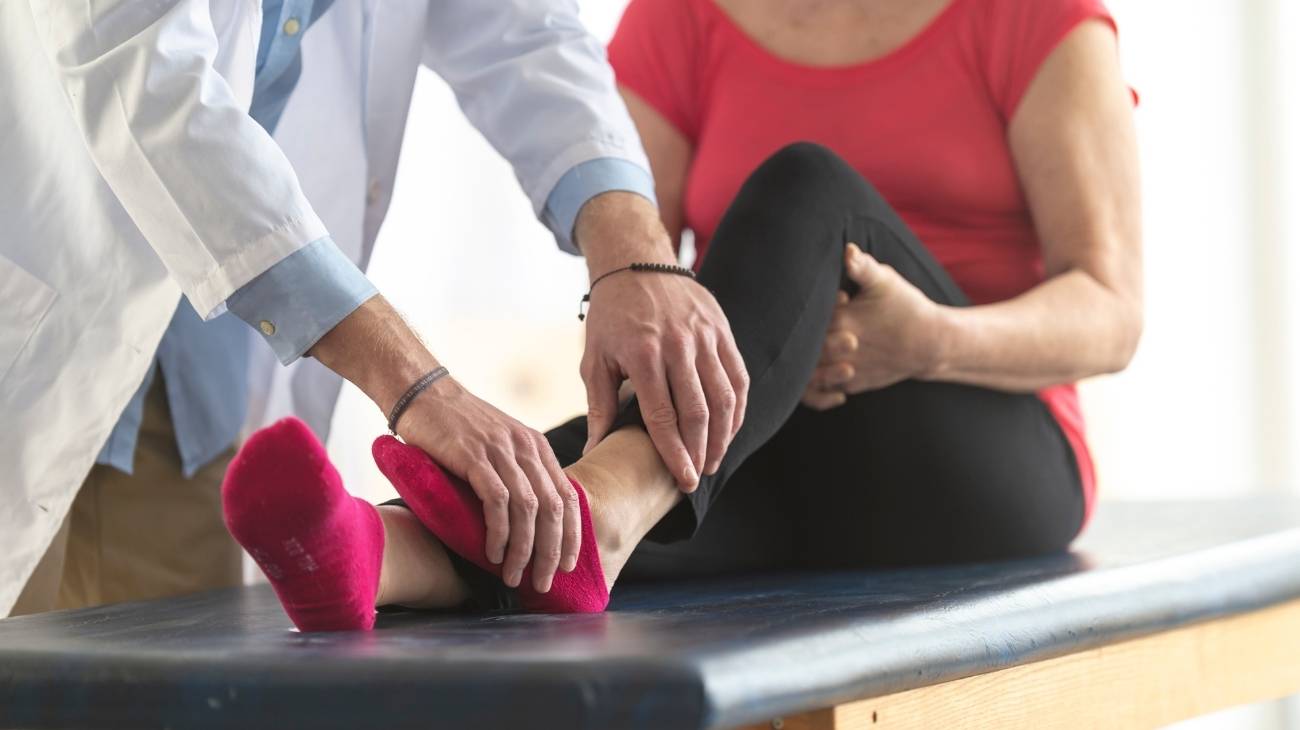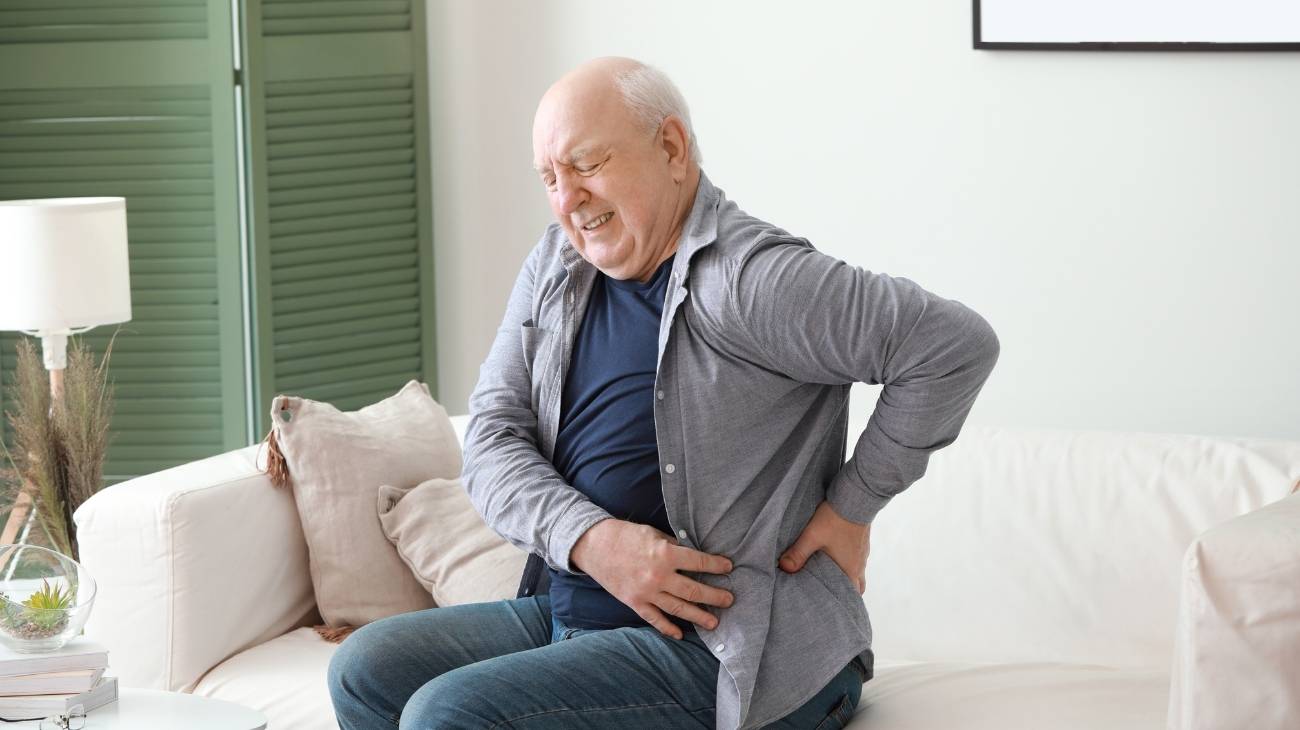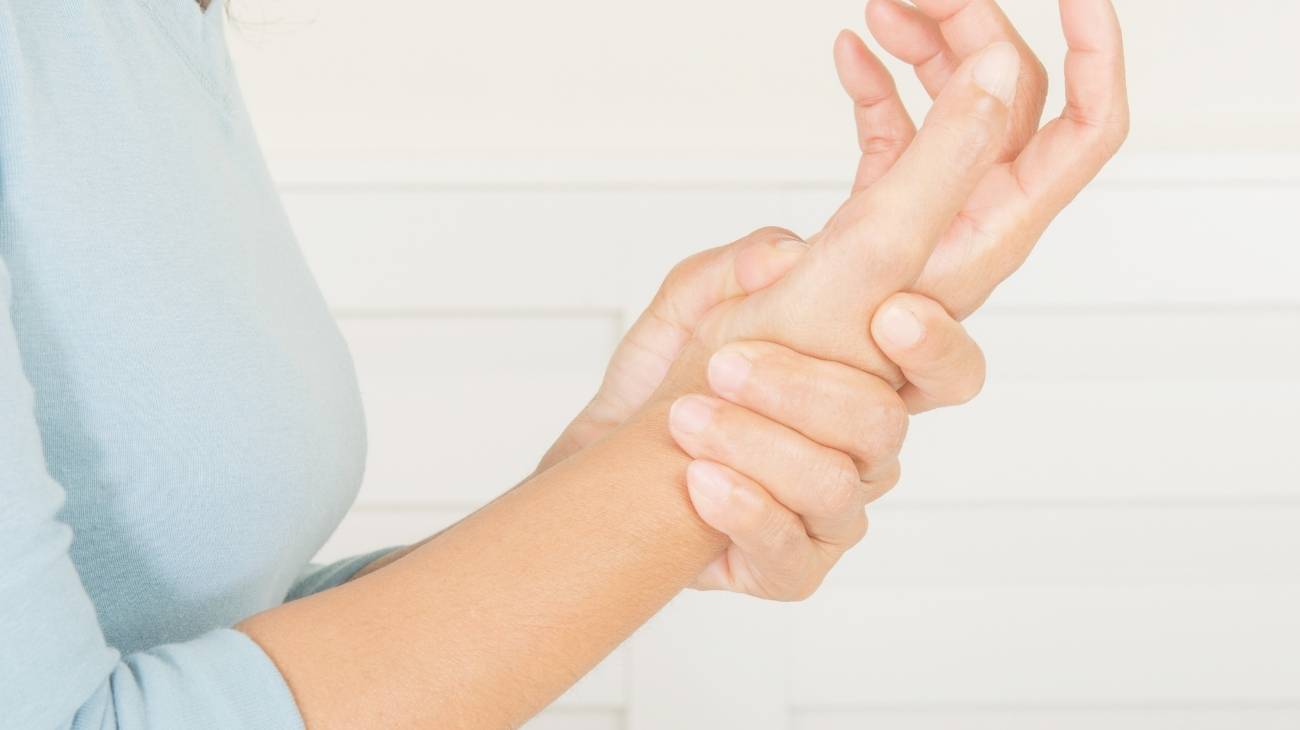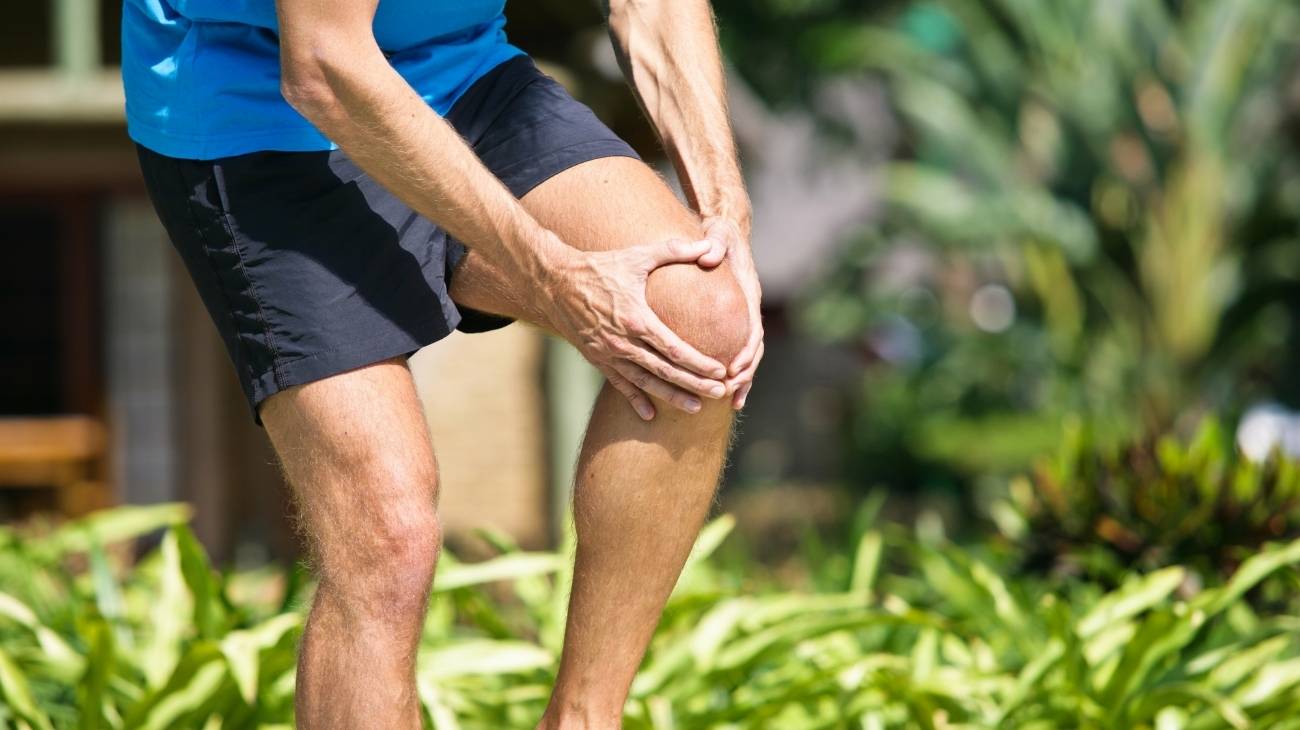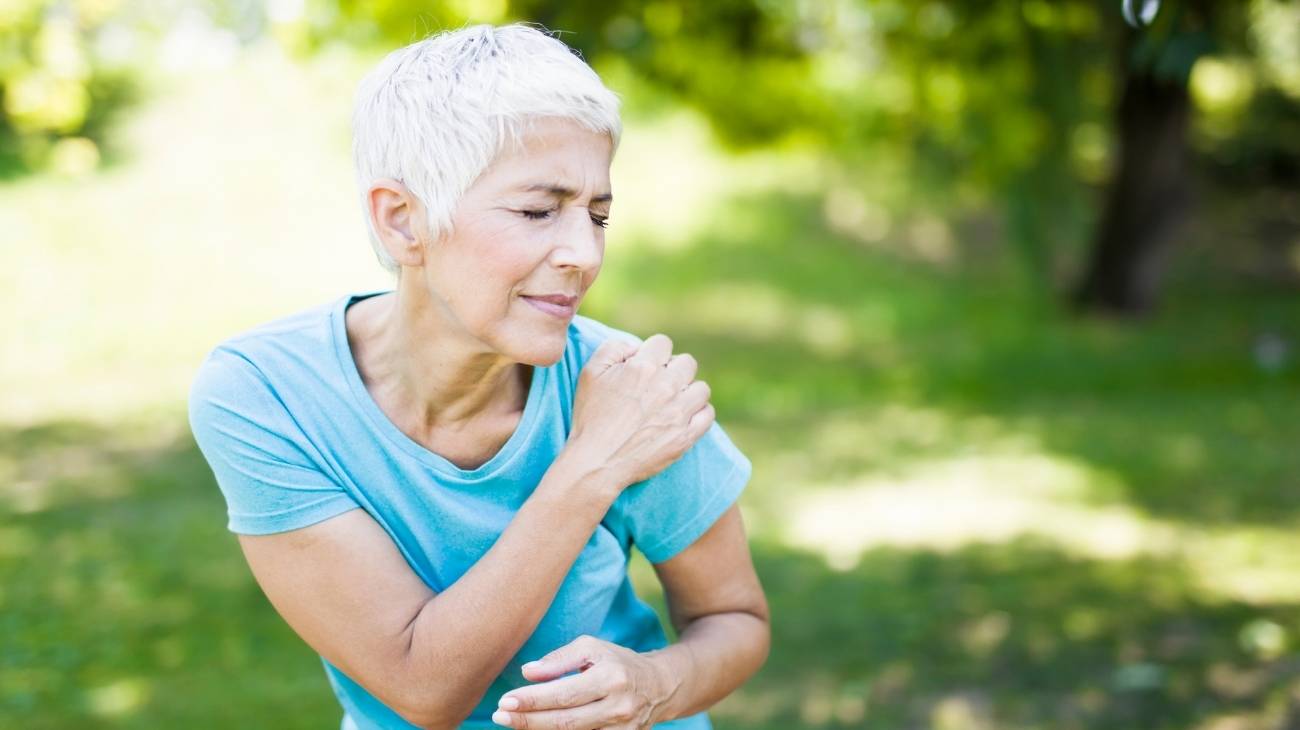- What is shoulder osteoarthritis or inflammation of the shoulder joint?
- What are the causes and risk factors for osteoarthritis of the shoulder?
- Best products for shoulder arthritis
- Main symptoms that warn us of arthritis of the shoulder
- What treatments are available to improve the symptoms of osteoarthritis in the shoulder?
- What are the most effective prevention methods for osteoarthritis of the shoulder?
The risk factors that cause inflammation of the shoulder joint are unknown to most of the adult population. For this reason, we will show you below what osteoarthritis of the shoulder is and what causes it. We will also explain the main symptoms of this ailment.
But that's not all, you can also read about the different types of treatment that medicine has developed to improve and reduce the symptoms of osteoarthritis of the shoulder. Pay attention to all the details in this post because we will also tell you the prevention methods of this disease.
What is shoulder osteoarthritis or inflammation of the shoulder joint?
Scapulohumeral osteoarthritis is a disease that, as time goes by, worsens its effects on the shoulder tissues, producing a chronic erosion of the hyaline cartilage. This condition affects the joint that connects the glenoid of the scapula to the humerus, causing deformity in the joint cavity and the presence of bone spikes.
One of the immediate consequences of this inflammatory disease is loss of movement in the arm, but with massage, physiotherapy and other types of treatment it is possible to control the symptoms and allow the patient to lead a normal life.
What are the causes and risk factors for osteoarthritis of the shoulder?
Learn about the circumstances and elements that put your health at risk by increasing the likelihood of osteoarthritis of the shoulder.
Pay attention to the following list:
- Previous trauma: This is one of the most common causes of osteoarthritis of the shoulder because the joint has suffered blows that affect the hyaline bone or the synovial membrane.
- Disease-specific degenerative process: The cartilage tissue is affected over time, leading to the presence of osteoarthritis of the shoulder. It can also be caused by previous illnesses in the patient.
- Dislocations or tendon ruptures: Although traumatisms are the types of accidents mentioned, these events can be considered as different causes of scapulohumeral osteoarthritis.
- Age of the patient: The disease is more likely to occur in people over 60 years of age due to the loss of collagen in the articular cartilage.
- Risky activities: Falls, hard blows and constant heavy lifting can all lead to scapulohumeral osteoarthritis. Repetitive movements help to enhance this inflammatory disease.
- Sedentary lifestyle and unhealthy diet: Eating foods rich in uric acid instead of Omega 3 vitamins helps the sudden onset of osteoarthritis. Lack of physical activity also stimulates inflammation in the joint.
- Hereditary factors: It is possible that genetics may be a cause of risk in patients whose parents and siblings suffer from the disease.
Best products for shoulder arthritis
Bestseller
-
Microwave Wheat Bag for Neck & Shoulder Pain Relief (Hearts)
£24,95 -
Microwave Wheat Bag for Neck & Shoulder Pain Relief (Oxford)
£24,95 -
Microwave Wheat Bag for Neck & Shoulder Pain Relief (Sport)
£24,95 -
Microwave Wheat Bag for Neck Pain Relief (Hearts)
£20,95 -
Microwave Wheat Bag for Neck Pain Relief (Oxford)
£20,95 -
Microwave Wheat Bag for Neck Pain Relief (Sport)
£20,95 -
Microwaveable Wheat Bag for Pain Relief (Hearts)
£20,95 -
Microwaveable Wheat Bag for Pain Relief (Oxford)
£20,95 -
Microwaveable Wheat Bag for Pain Relief (Sport)
£20,95
Main symptoms that warn us of arthritis of the shoulder
There are signs in the body that you should not overlook, as they may be warning signs of osteoarthritis in the shoulder.
See below what are the main signs that will help you to quickly detect this type of disease:
- Difficulty flexing and extending the arm: It is also possible to find patients with adduction and abduction problems, caused by instability and stiffness of the joint.
- Difficulty of movement: Problems with dressing, lifting and performing normal everyday actions with the affected arm.
- Constant pain in the shoulder: in the upper back and arm.
- Muscle stiffness in the affected area: which may increase after a night's rest.
- Appearance of osteophytes or bone spikes in the shoulder: this is due to the accumulation of crystals in the hyaline articular cartilage.
- Inflammation and redness of the shoulder: without any reason or cause due to previous trauma.
- Misalignment of the shoulder bones: causing the arm to be in a different line to the other.
What treatments are available to improve the symptoms of osteoarthritis in the shoulder?
Nowadays there are different techniques and treatments that you can use to improve the symptoms of osteoarthritis of the shoulder. Read on for a complete list of these types of therapy.
Alternative and complementary therapies
Over the course of time, rheumatology has incorporated different treatments in addition to drug therapy. For this reason, we will show you below the rehabilitation methods that are applied in a complementary way and that are available to improve the patient's quality of life.
The treatments are:
- Heat and cold therapy: in this type of therapy, the aim is to apply the thermal properties of heat and cold. This improves blood flow, activates the soft tissues in the affected area, reduces swelling and promotes metabolic activity, among other benefits. This requires the application of hot water bottles, ice, gels or thermal devices that raise the temperature of the shoulder and then cool it down in a short time. The recommended technique cannot exceed 15 to 20 minutes of application and the heat should be applied first, then the cold and then the heat again.
- Compression therapy: bandages, compression garments or braces that fit over the shoulder can be used to immobilise the shoulder joint. This stops the articular cartilage from working improperly, prevents the bones from touching and improves the alignment between the back and shoulder. This type of treatment is used according to the progression of the disease and the type of patient.
- Massage therapy: by means of moderate pressure on the epidermal tissues it is possible to emit heat into the muscles so that the patient feels a sense of well-being and relaxes the entire musculo-tendinous structure of the affected area. This reduces the pain and reduces inflammation in the shoulder joints. Different techniques can be used, but massages are usually performed manually.
- Acupressure therapy: It is possible to alleviate the symptoms of osteoarthritis of the shoulder by means of this oriental medicine. For this purpose, it is necessary to press different strategic parts of the body so that the nervous system sends comfort signals to the brain. In this way it is possible to relax the patient and cause the muscle stiffness to decrease, obtaining a better posture so that the joint capsule can work with greater amplitude.
- Thermotherapy: this is a therapy similar to hot and cold therapy, but in this case cryotherapy is eliminated in order to use only the benefits of heat. Therefore, with thermotherapy, bags with hot water, special gels or electric blankets are applied to the affected area to help emit the appropriate temperature. The aim is to dilate the blood vessels and thus reduce muscle stiffness in order to improve the activity in the joint cavity.
- Natural remedies with the use of plants: this type of therapy is based on obtaining the benefits of plants offered by nature and using them in the treatment of osteoarthritis of the shoulder. In this way it is possible to obtain chemical compounds that help to reduce inflammation of the muscles and tendons, relieve pain and have a sedative effect on the patient. It is possible to implement this rehabilitation method if the doctor is consulted beforehand, this will prevent future injuries and sequelae. Chamomile, jarrilla, rosemary and sage are some of the plants used in phytotherapy.
- Ultrasound: in this case the therapist, by means of an electronic device, introduces mechanical vibrations at very high frequencies, which exceed sound, into the affected area. In this way it is possible for the electro-acoustic transducers to generate heat in the shoulder, thus reducing muscle tension and relieving the patient's symptoms. In order to carry out this treatment, it is necessary to consult a doctor to avoid any future problems.
- Meditation and relaxation: The aim of meditation and relaxation is for the patient to control his or her own mind in situations of pain and stress caused by osteoarthritis of the shoulder. In this way, it is possible to reduce the tension in the affected muscle structure in the joint area and to correct the location of the joint cavity with fluid. This results in smoother movements and the patient is able to cope with the ailments with as little stress as possible by means of mental harmony.
- Aromatherapy: various essential oils are used in this complementary treatment for osteoarthritis of the shoulder so that the patient can perceive the smells by means of smokers, burners or simply by means of a cloth soaked in the desired substance. This technique activates certain sectors of the brain that help relaxation and mental balance. For this reason, it is a very useful therapy when seeking to decompress the shoulder muscles to improve the movements of the joint. The most commonly used scents are peppermint, rosemary and lavender, although other varieties are also available.
- Acupuncture: as with acupressure, this treatment, based on Chinese medicine, consists of stimulating the nervous system by means of needles placed in strategic areas of the body. This reduces pain and improves the patient's quality of life because it allows a level of relaxation that helps to open the joint capsule.
- Biofeedback: this complementary treatment for osteoarthritis of the shoulder helps the patient to be aware of different parameters of his body when he is relaxed or expressing himself. Various medical devices can be used to monitor heart rate, muscle tension and blood pressure. These reports help the patient to gain an in-depth knowledge of the alteration of his physiological state in both extreme situations.
- Healthy lifestyle: It is advisable to bear in mind that a sedentary lifestyle and a poor diet are two risk factors that can lead to osteoarthritis of the shoulder. For this reason, therapy that includes healthy lifestyle habits seeks to inform the patient of the importance of carrying out activities that are beneficial to their health. This includes exercise, avoiding excess weight, correcting posture and not over-stressing the joint.
Dietary supplements
Chondroitin sulphate and glucosamine are two substances found in joint cartilage that can be used as a dietary supplement treatment for osteoarthritis of the shoulder. In addition, it is possible to incorporate minerals that help to improve the patient's well-being by reducing pain and stiffness in the shoulder, back and arm. These supplements are available in tablets, powder, liquid and capsules. It should be noted that the dosage must be prescribed by a doctor.
Physiotherapy treatments
Physiotherapy helps to counteract the symptoms of osteoarthritis of the shoulder by means of physical exercises, X-rays and radiation applied directly to the affected area. This helps to reduce muscle stiffness and pain in the joint. The physiotherapist in charge will propose a series of routines that will be planned together with the traumatologist.
Medications
To reduce inflammation and relieve pain in the shoulder, topical anti-inflammatory and analgesic drugs should be used in therapy. Prescription and dosage should be done by a doctor. Self-medication is a very dangerous decision and can worsen the symptoms of the disease. For this reason, you should never take drugs without first consulting your doctor.
Inhibitors of the immune system are also prescribed in this treatment when the osteoarthritis is of the autoimmune type. However, certain factors of these drugs must be taken into account because they can cause other kinds of diseases.
Surgery
Surgical intervention in osteoarthritis of the shoulder is recommended only for severe cases, in which the progression of the disease has eroded the articular cartilage and causes the bones to touch. In addition to this, there may be some cases where the collagen-rich tissue has disappeared and the bones themselves are wearing away. The most common surgeries are arthroplasty, when the bone needs to be removed, and hemiarthroplasty, where the head of the humerus is replaced.
What are the most effective prevention methods for osteoarthritis of the shoulder?
Learn about all the preventive measures that will help you avoid the onset of osteoarthritis of the shoulder:
- Avoid high-impact activities: Do not engage in activities that put your shoulder at risk and can cause trauma. If for any reason you work or play sports that involve impact on the joint, you should take all the necessary precautions to protect the shoulder area.
- Avoid fatty foods: uric acid, if not excreted in the urine, accumulates crystals in the hyaline cartilage causing the appearance of overbones and the loss of collagen in the tissue.
- Practise physical activity on a daily basis: Walking half an hour a day or cycling helps to keep cholesterol and uric acid levels within normal parameters. Therefore, even if you do not belong to the age group at risk, it is advisable to avoid a sedentary lifestyle in order to considerably reduce the onset of osteoarthritis of the shoulder.
- Don't lift heavy things: This could lead to dislocations and torn ligaments, which could help scapulohumeral osteoarthritis. Try not to carry large, heavy backpacks, which can put the joint at risk.
- Avoid smoking and alcohol: Smoking is one of the main causes that can lead to shoulder osteoarthritis due to contamination of the body and malfunctioning of the autoimmune system.
- See your doctor at any symptom: Attacking the disease as early as possible is the best thing you can do to get the condition into remission as quickly as possible. Remember not to self-medicate, as this could have serious consequences for the development of the disease.
References
- Chen, A. L., Joseph, T. N., & Zuckerman, J. D. (2003). Rheumatoid arthritis of the shoulder. JAAOS-Journal of the American Academy of Orthopaedic Surgeons, 11(1), 12-24. https://journals.lww.com/jaaos/Abstract/2003/01000/Rheumatoid_Arthritis_of_the_Shoulder.4.aspx
- Nguyen, V. D. (1996). Rapid destructive arthritis of the shoulder. Skeletal radiology, 25, 107-112. https://link.springer.com/article/10.1007/s002560050045
- Leslie, B. M., Harris 3rd, J. M., & Driscoll, D. O. N. A. L. D. (1989). Septic arthritis of the shoulder in adults. JBJS, 71(10), 1516-1522. https://journals.lww.com/jbjsjournal/Abstract/2002/10000/Shoulder_Arthroplasty_for_Arthritis_After.6.aspx
- Hattrup, S. J., Sanchez-Sotelo, J., Sperling, J. W., & Cofield, R. H. (2012). Reverse shoulder replacement for patients with inflammatory arthritis. The Journal of hand surgery, 37(9), 1888-1894. https://www.sciencedirect.com/science/article/abs/pii/S0363502312006843
- Collins, D. N., Harryman, D. T., & Wirth, M. A. (2004). Shoulder arthroplasty for the treatment of inflammatory arthritis. JBJS, 86(11), 2489-2496. https://journals.lww.com/jaaos/Abstract/2017/08000/Septic_Arthritis_of_the_Shoulder__A_Comparison_of.13.aspx
- Aletaha, D., & Smolen, J. S. (2018). Diagnosis and management of rheumatoid arthritis: a review. Jama, 320(13), 1360-1372. https://jamanetwork.com/journals/jama/article-abstract/2705192
- Firestein, G. S. (2003). Evolving concepts of rheumatoid arthritis. Nature, 423(6937), 356-361. https://www.nature.com/articles/nature01661
- Meenan, R. F., Gertman, P. M., & Mason, J. H. (1980). Measuring health status in arthritis. Arthritis & Rheumatism, 23(2), 146-152. https://onlinelibrary.wiley.com/doi/abs/10.1002/art.1780230203
- Fries, J. F., Spitz, P., Kraines, R. G., & Holman, H. R. (1980). Measurement of patient outcome in arthritis. Arthritis & Rheumatism, 23(2), 137-145. https://onlinelibrary.wiley.com/doi/abs/10.1002/art.1780230202
- McInnes, I. B., & Schett, G. (2011). The pathogenesis of rheumatoid arthritis. New England Journal of Medicine, 365(23), 2205-2219. https://www.nejm.org/doi/full/10.1056/NEJMra1004965







































